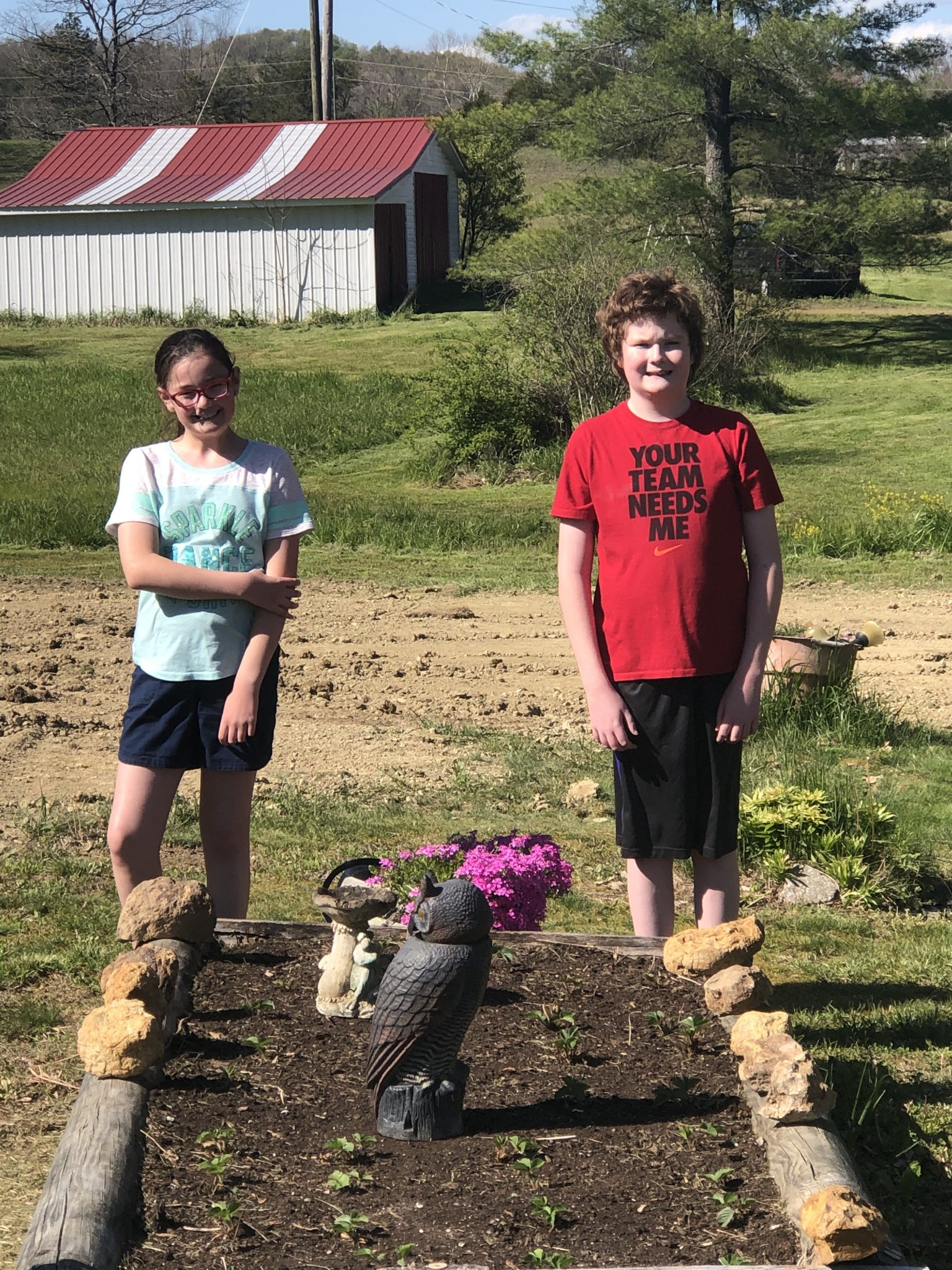The Spanish flu pandemic of 1918

Kenton and Patricia Lear, Inter-County Energy members, shared a story their grandchildren, 11-year-old twins Harrison and Susanne Mullins, wrote about their great-great-grandfather, Harrison Parson, shown.
Patricia says, “They have been reading Byron Crawford’s stories in Kentucky Living as part of their creative writing assignment during home school.”
Following is the story written by Harrison and Suanne Mullins, May 2020:
Great-great-grandfather’s Battle with the Pandemic of 1918
Our school has been closed for a month and half now. During this time, we have heard a lot about staying away from other people and about flattening the curve.
We are twins and it has been really hard to stay away from the other guy/gal.
We are still having school at home with our Nana, Patricia Lear. She is a retired teacher and has us doing a bunch of vocabulary words like pandemic, paradigm, vigilant, virulent, etc. She also teaches us math, history, geography, spelling, creative writing and dancing to the oldies on Friday.
Nana read Byron Crawford’s article in the April issue of Kentucky Living magazine.
Nana wants us to tell the story of how our family was almost wiped out before it even got started by another pandemic more than 100 years ago. Now we know why Nana insisted that we learn the meaning of chronologically and how to spell it.
With a lot of help from our grandparents, our great uncle, Darrell, and our great aunt, Carolyn, here is our story:
One of our great-great-grandfathers was Harrison Parson. He was born in September 1895 in Harlan County, Kentucky.
In 1907, Harrison and his family moved to Hoot Owl Hollow in the community of Cartersville, in the southern end of Garrard County.
Harrison said he remembered that first year very well because the Yellow-billed cuckoo called all summer. That bird is also known as a “rain crow,” and like the groundhog, has the legendary ability to predict the weather. Harrison said he learned in later years that the rain crow was not very good at predicting rain because it called a lot in really dry years.
Another thing Harrison remembered from his boyhood days was Carter’s Store near where they lived. The store had a drive-thru somewhat like McDonald’s where you could drive through with your horses and wagon and pick up your supplies.
A few years later, Harrison and his family were on the move again, this time to a house on Calico Road only about two miles away. This was a lucky move for Harrison because the next-door neighbor was a preacher named Will Bryant. Will and his wife, Virginia, (our great-great-great-grandparents) had several daughters. One of those daughters, Virgie, was to become Harrison’s wife and our great-great-grandmother.
Harrison Parson and Virgie Bryant were married in 1916 and moved into a small house on Copper Creek Road in Garrard County. From there they would go on to raise nine children, mostly during the Great Depression. The challenges were enormous. Neither great-great-grandparent had much in the way of a formal education. Neither ever worked at a public job. Their survival depended on raising anything and everything, from geese to gooseberries, on the small patches of cleared land they owned. They also got some help from Mother Nature as there was wild game, plenty of chestnuts, walnuts, blackberries, etc., in season.
The greatest challenge of all to Harrison and his young wife came in 1917. Before they were to begin their family, Harrison was drafted into the U.S. Army and was sent to an Army base in Maryland. World War I had been raging in Europe since 1914. President Woodrow Wilson tried to keep the U.S. out of the war. But, after the sinking of several ships by German U-boats and other acts of war by Germany, Wilson had had enough. The U.S. declared war on Germany in April 1917.
While Harrison was in training, a worldwide pandemic called the Spanish flu broke out. Our great-great-grandfather came down with this serious illness. He later told his grandchildren that he became so sick that he thought he would surely die. He said as he lay in his hospital bed, he could look out a hospital window and see dead soldiers being hauled away.
Eventually Harrison recovered and came home to Copper Creak. His brother-in-law, Durant Creech, who had gone overseas to fight in the war was also released. Creech told Harrison about his experience with the Spanish flu on the battlefield. Creech said most of the bodies he saw on the battlefield had no bullet holes in them. He said they had died from the flu. Because of the war, the federal government did little, if anything, to contain the virus. The Spanish flu lasted three years.
Around four million died from World War I.
A lot has changed in rural Kentucky during the last 100 years. Most of the roads back then were muddy wagon trails. There were large areas that were mostly wilderness. There was no internet, no electricity, no food banks, no Social Security, no government bailouts and no stimulus checks. You were pretty much on your own. The old saying, “root hog or die” probably came from that time.
We are so thankful that our ancestor, Harrison Parson, survived the Spanish flu. He has had over 100 descendants and most of them, including our family, are still alive.
We think about how fate and pandemics can shape the destiny of families forever.
Harrison and Susanne Mullins are the children of James and Angela Mullins, and the grandchildren of Kenton and Patricia Lear of Copper Creek and the late Harry D. Mullins and the late Norma Mullins of Renfro Valley. The twins are the fifth generation to live on the family farm on Copper Creek.


